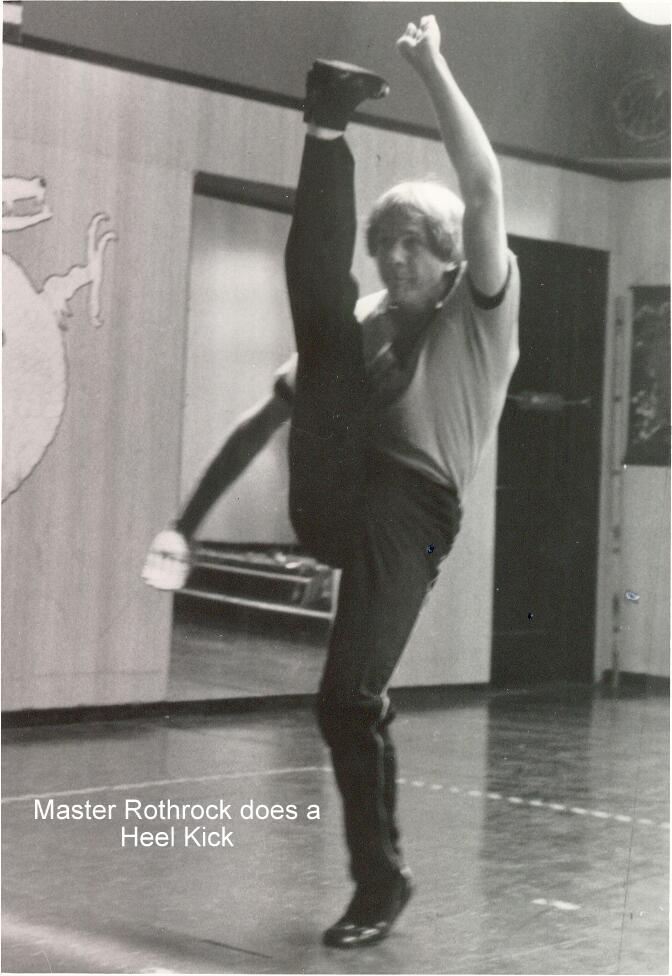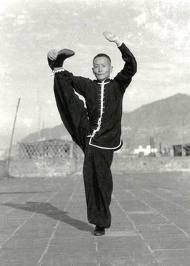
The first school of thought says that stretching is not essential. People who advocate this position usually cite as evidence that in any encounter where you will be forced to defend yourself, you will not have time to warm up or stretch. You will have to go in cold or from 0 to 60mph at the drop of a hat. So, training must mirror what will happen on the street. You should train your skills like you will use them.
The second school of thought believes that stretching is of the utmost importance. They will cite research and anecdotal information stating that stretching improves blood flow, keeps the tissue and joints flexible, reduces lactic acid buildup (speeds up recovery time), prevents adhesions, and can reduce the risk of injury.
In truth, both ways of thinking are correct. In actual practice, either side of the spectrum will not produce optimum results and would be too narrow-minded, thereby stunting the potential for full development. A middle path is much more effective.
So, what is this middle path? Most movements and forms training in martial arts do not require a lot of stretching and warmup to perform unless your style utilizes a lot of high kicks and low stances. Usually, you can go light on the movements at first until the body is warmed up and then go at full bore.
Going through the movements of your art can create natural flexibility in the body. For example, most of the necessary training for the Five Family Southern Shaolin is done from a Horse Stance or transitioning from a Horse to a Forward Stance (I would be talking about the breathing exercises and the basic hand techniques). Practicing these aspects of the style over time will loosen up the hips. Over time, the hips will get more flexible and move to a higher degree of movement without a warmup. In other words, the body will adapt to the training, and over time, the flexibility needed to do the actions will be developed and gained.
So, where does stretching exercise fit into a training regimen? Stretching as an exercise is good for many things, including becoming more flexible to increase the range of motion (if the limitation is not due to a structural issue). Stretching increases blood flow and decreases recovery time from strenuous exercise. Stretching can be used for a warmup, cool down, or as a workout in and of itself. Stretching takes the body’s tissues and works to loosen and elongate them, creating a more subtle and flexible body.
Stretching should not be confused with joint mobility or joint loosening exercises. These movements fluidly move the joints through ranges of motion and work to lubricate and maintain their mobility. Sometimes, the line between stretching and joint mobility is blurry, especially in some exercises where movement and twisting combine with stretching (it is sort of like the best of both worlds on the physical level).
Here are some general tips for getting the most out of your stretching routine:
- Try not to stretch cold muscles- warm up first (this is not an issue when stretching at the end of a workout).
- If you feel pain, something is wrong.
- Don’t bounce or strain.
- Relax.
The Stretch Reflex
The stretch reflex occurs when your muscle tightens to prevent your joint from injury. It defines your limit of flexibility. Notice that it has nothing to do with how tight the muscle is. It is a protection mechanism. Your body protects itself from overextending.
Of course, sometimes the muscles are tight, but for the most part, the limit of your flexibility is determined by when the stretch reflex kicks in. It is there to protect you.
To improve your flexibility, you need a combination of flexibility and strength. Regular stretching will develop the strength of the muscle at the extended position over time just by going into and coming out of the stretch. But this process can be very slow.
Modern exercise science has some faster ways to increase the body’s flexibility. Some methods include contracting the stretched muscle to increase the strength at the extended or lengthened position, telling the body that it is okay to be in the extended position, and nullifying the stretch reflex (making it go a little farther). Some of these methods can be used to increase flexibility dramatically in a short period, and the drawback of some methods is that they can be quite extreme. Because you are using force, there is more danger of injury.
In traditional training, there are many methods to improve flexibility. Some stretching techniques include movements to strengthen the muscle through its range of motion. Another is relaxing into the extended positions and movements with twisting into the extended positions. Dynamic actions that balance out the passive exercises and further help to strengthen the muscles in their extended positions.
